Narrative illustration – Irish Folklore
Narrative Illustration:
Scenes from Irish Folklore
In this post I’ll talk a bit about the illustrations I made for an Irish folklore storytelling project. These are definitely my favourite type of illustration to make, and I loved researching these characters and developing the scenes.
In this post I’ll talk a bit about the illustrations I made for an Irish folklore storytelling project. These are definitely my favourite type of illustration to make, and I loved researching these characters and developing the scenes.
Q: Were these illustrations planned?
A: Yes. Unlike some of personal work, this was storytelling project that followed a script. Each of the illustration sketches were done according to the text and then sent for approval before any final art was done.
Q: How did you select the scenes?
A: I underline passages in the text that I feel are most important or striking, and I start the sketching process by making thumbnails. I try to make many different sketches so the person who commissioned the illustrations has options to chose from.
These thumbnails are then turned into rough sketches, such as the ones you can see in the gallery bellow. These were sent to the commissioner for approval, and then the selected ones got cleaned up and changed according to their suggestions.


Q: Were these illustrations planned?
A: Yes. Unlike some of personal work, this was a storytelling project that followed a script. Each of the illustration sketches were done according to the text and then sent for approval before any final art was done.
Q: How did you select the scenes?
A: I underline passages in the text that I feel are most important or striking, and I start the sketching process by making thumbnails. I try to make many different sketches so the person who commissioned the illustrations has options to chose from.
These thumbnails are then turned into rough sketches, such as the ones you can see in the gallery bellow. These were sent to the commissioner for approval, and then the selected ones got cleaned up and changed according to their suggestions.
For the cover of The Hare and The Leprechaun the sketch started in an option for the title page, which then developed into a full scene. A change was made to the design of the Hare character, as per the commissioner’s request. The composition of the final scene was chosen thinking of the application: a Youtube video cover.
For the cover of The Tombs and The Fairy King there where a couple of drafts before the final form. It was decided that the scene would portray the characters in two different periods of time – the girl singing by the tombs and being watched by the fairy king and her loved one already aged looking in the distance.
For the cover of The Hare and The Leprechaun the sketch started in an option for the title page, which then developed into a full scene.
A change was made to the design of the Hare character, as per the commissioner’s request. The composition of the final scene was chosen thinking of the application: a Youtube video cover.
For the cover of The Tombs and The Fairy King there where a couple of drafts before the final form. It was decided that the scene would portray the characters in two different periods of time – the girl singing by the tombs and being watched by the fairy king and her loved one already aged looking in the distance.
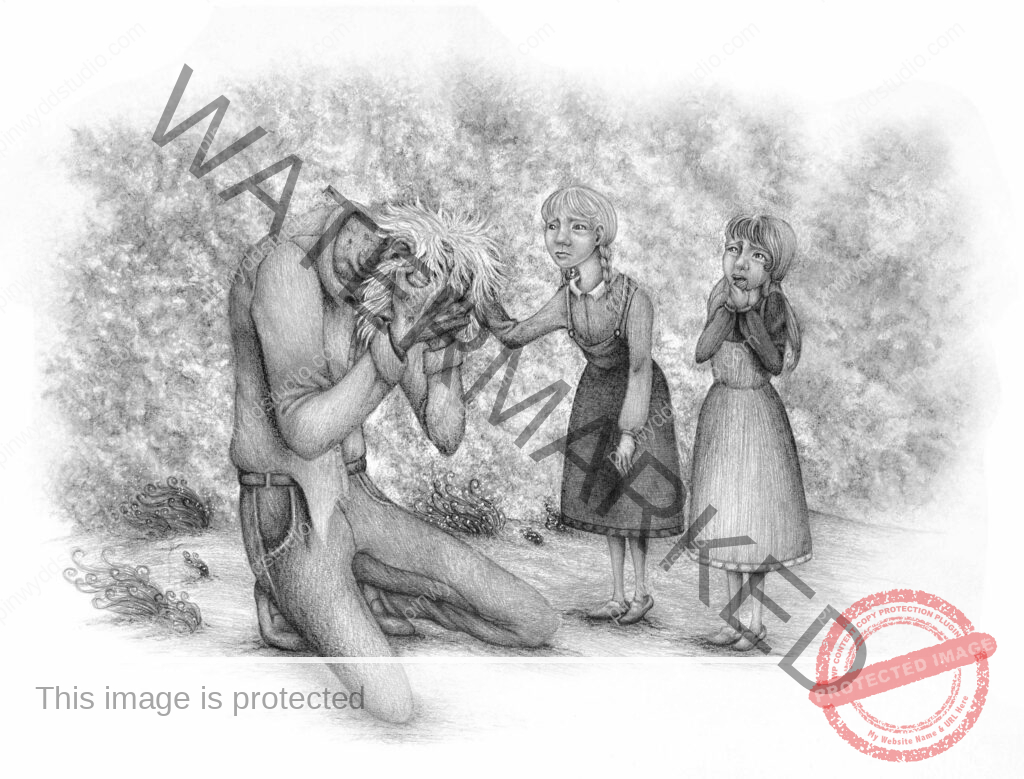
Q: How did you come up with the appearance for the characters?
A: I took into consideration not only the general description included in the text, but also did a lot of research to make sure the details made sense. This story happens in a more modern time, so the man’s clothes are not too different than what we’d see today. The young woman on the other hand appears around the time of WWI, so I matched her style to pictures from that time.
You’ll notice that the leprechaun looks nothing like the modern red haired, dressed all in green version we see in Saint Patricks events. That is because I used descriptions from texts written in the 19th century, which describe him wearing rich embroidered clothes with strong colours, and a tricorn hat.
Unfortunately this project didn’t go to it’s full length (which is sad, I was really excited to work with Irish legends), but you can see the published video for The Hare and the Leprechaun here.

Q: How did you come up with the appearance for the characters?
A: I took into consideration not only the general description included in the text, but also did a lot of research to make sure the details made sense. This story happens in a more modern time, so the man’s clothes are not too different than what we’d see today. The young woman on the other hand appears around the time of WWI, so I matched her style to pictures from that time.
You’ll notice that the leprechaun looks nothing like the modern red haired, dressed all in green version we see in Saint Patricks events. That is because I used descriptions from texts written in the 19th century, which describe him wearing rich embroidered clothes with strong colours, and a tricorn hat.
Unfortunately this project didn’t go to it’s full length (which is sad, I was really excited to work with Irish legends), but you can see the published video for The Hare and the Leprechaun here.
Unfortunately this project didn’t go to it’s full length (which is sad, I was really excited to work with Irish legends), but you can see the published video for The Hare and the Leprechaun here.
Questions, suggestions, propositions? Send us a message!
Error: Contact form not found.
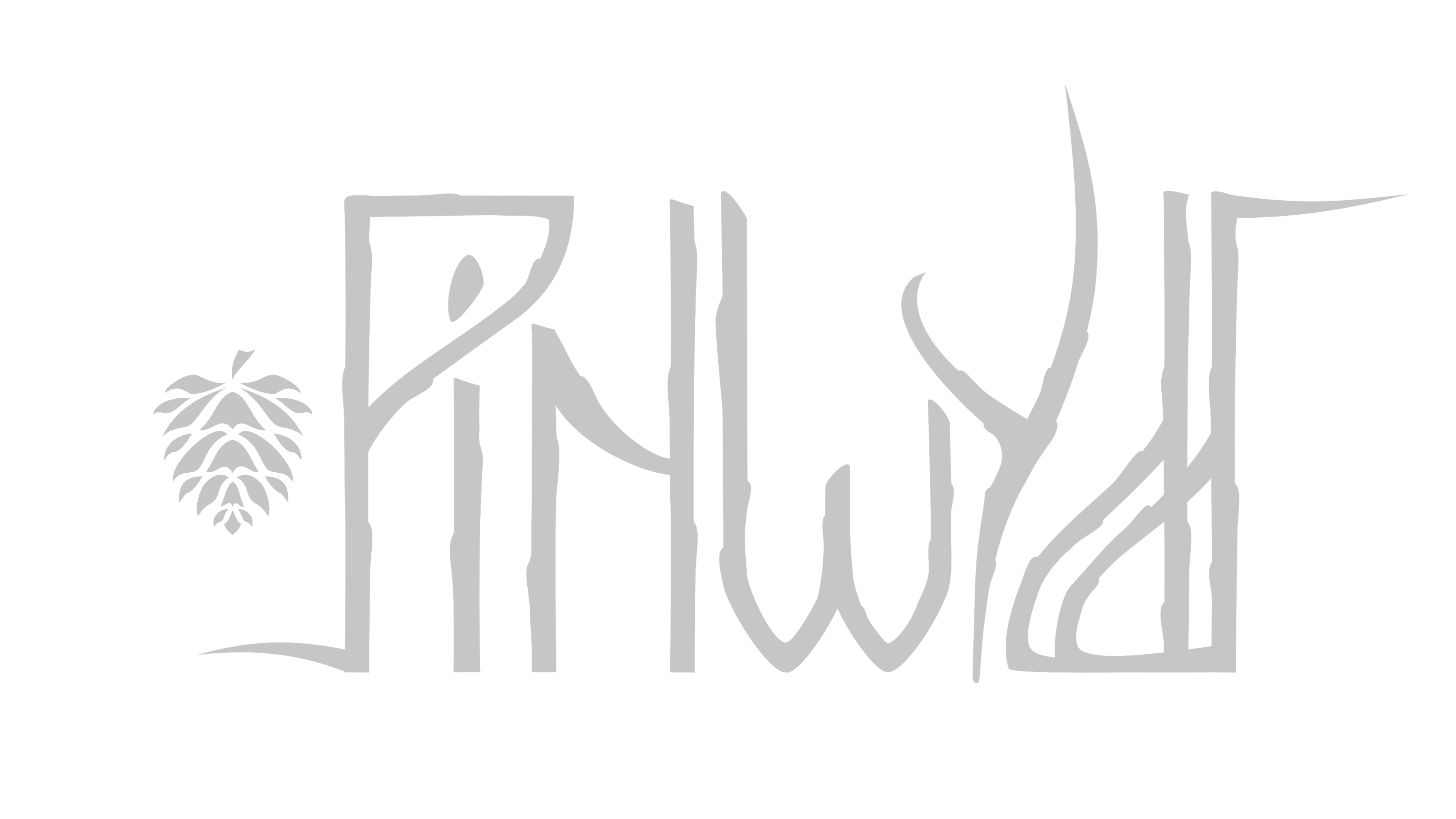
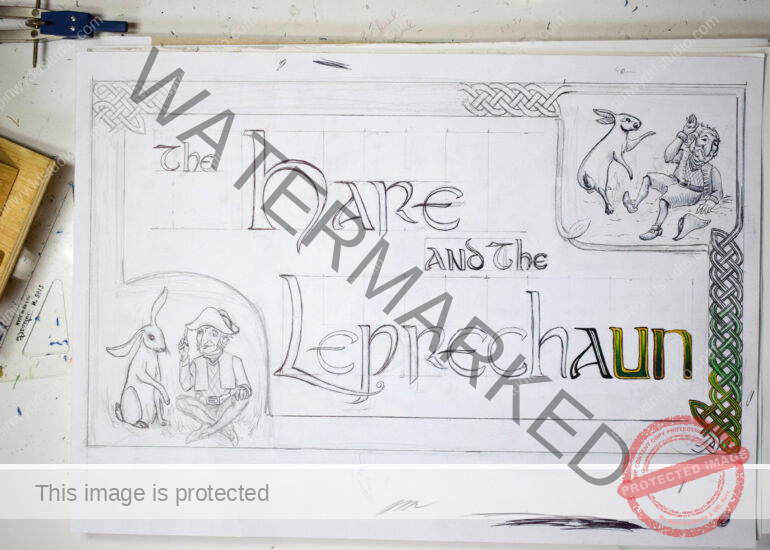


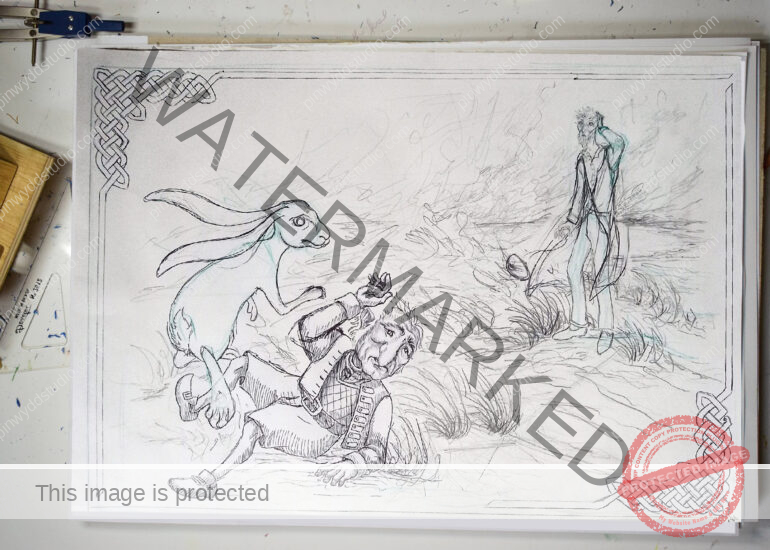
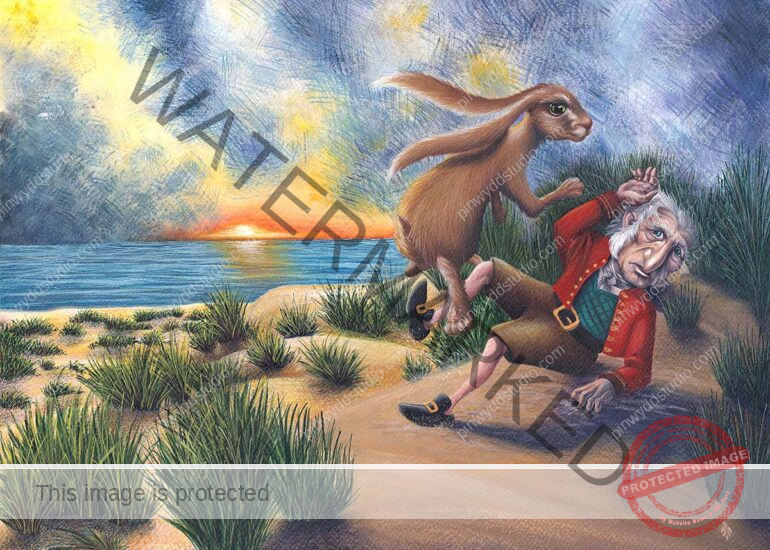




Comments are closed.